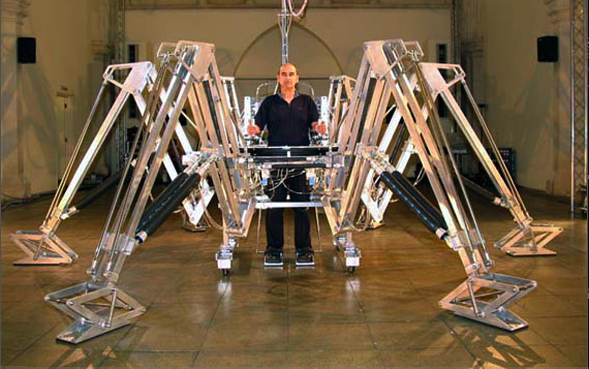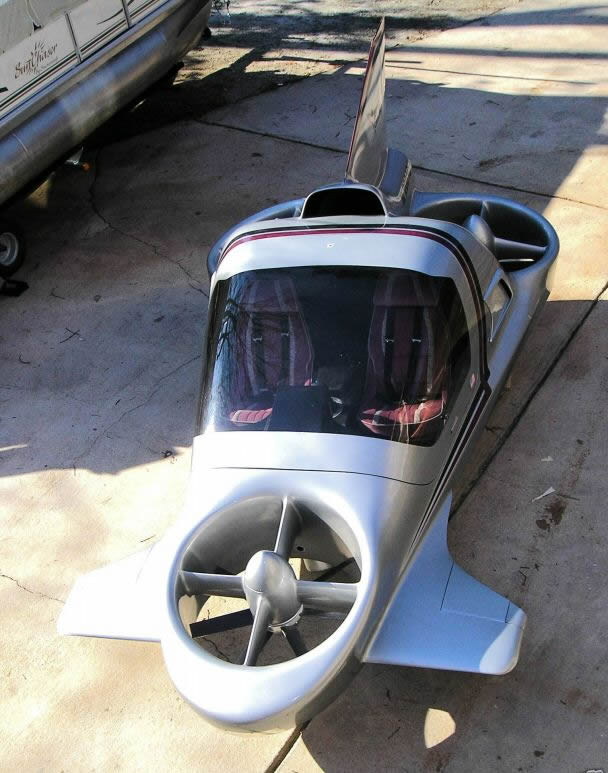5. Military Exoskeleton Prototype

The Military exoskeleton is a completely un-tethered, hydraulic-powered anthropomorphic exoskeleton that provides users with the ability to carry loads of up to 200 lbs for extended periods of time and over all terrains. Its flexible design allows for deep squats, crawls and upper-body lifting. There is no joystick or other control mechanism. The exoskeleton senses what users want to do and where they want to go. It augments their ability, strength and endurance.
4. Flying Car

It’s called “The Highway in the Sky,” and here’s how it works: Every time you’re stuck in traffic, you can flip a switch and swoop into the sky (via CBS News).
3. Flying Saucer

Last time I saw a flying saucer being engineered to take to the skies was with a Moller’s prototype . Since then and till very recently – perhaps till the moment I came across this, I never thought lethal drones could also take a leaf from the extraterrestrial flyers. A British drone company called Aesir , however, thinks it’s feasible, and is thus creating models of unmanned aerial vehicles in the shape of flying saucers. (Via gizmowatch).
2. Virtual Goggles

Technology has brought virtual worlds into our computers for many years. Now, virtual reality (VR) will be in our living rooms. The underground effort that has been an experimental fantasy for decades has become reality now (Via Softpedia News).
1. Contact Lenses that Change Color To Alert Diabetics of Glucose Levels

There is great news for diabetics. A revolutionary technology has came into being to help them measure blood sugar levels without drawing blood daily. It uses extremely small nanoparticles embedded into the hydrogel lenses . These engineered nanoparticles react with glucose molecules found in tears, causing a chemical reaction that changes their colour. Developed by biochemical engineering professor Jin Zhang at the University of Western Ontario. (Via ImpactLab).